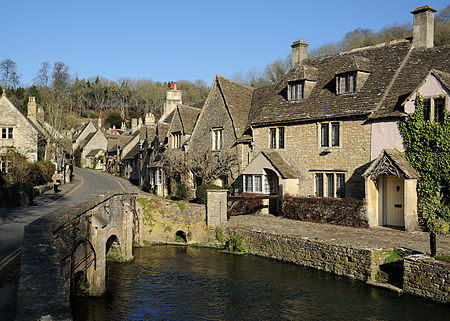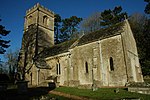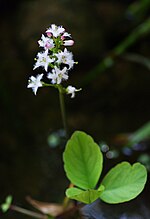Cotswolds

The Cotswolds ( KOTS-wohldz, KOTS-wəldz) is a region in central, South East, but predominantly South West England, along a range of rolling hills that rise from the meadows of the upper River Thames to an escarpment above the Severn Valley, Bath and Evesham Vale. The area is defined by the bedrock of Jurassic limestone that creates a type of grassland habitat rare in the UK and that is quarried for the golden-coloured Cotswold stone. The predominantly rural landscape contains stone-built villages, towns, stately homes and gardens featuring the local stone. Designated as an Area of Outstanding Natural Beauty (AONB) in 1966, the Cotswolds covers 787 square miles (2,038 km2), making it the largest AONB. It is England's third-largest protected landscape, after the Lake District and Yorkshire Dales national parks. Its boundaries are roughly 25 miles (40 km) across and 90 miles (140 km) long, stretching south-west from just south of Stratford-upon-Avon to just south of Bath, near Radstock. It lies across the boundaries of several English counties; mainly Gloucestershire and Oxfordshire, and parts of Wiltshire, Somerset, Worcestershire, and Warwickshire. The region's highest point is Cleeve Hill at 1,083 ft (330 m), just east of Cheltenham. The hills give their name to the Cotswold local government district, formed on 1 April 1974, within the county of Gloucestershire. Its main town is Cirencester, where the Cotswold District Council offices are. As of 2021, the population of the 450-square-mile (1,200 km2) district was about 91,000 . The much larger area referred to as the Cotswolds encompasses nearly 800 square miles (2,100 km2). The population of the Area of Outstanding Natural Beauty was 139,000 in 2016.
Excerpt from the Wikipedia article Cotswolds (License: CC BY-SA 3.0, Authors, Images).Cotswolds
Gloucester Road, Cotswold District Winstone
Geographical coordinates (GPS) Address Nearby Places Show on map
Geographical coordinates (GPS)
| Latitude | Longitude |
|---|---|
| N 51.8 ° | E -2.0333333333333 ° |
Address
Watercombe Cottages
Gloucester Road
GL53 9PL Cotswold District, Winstone
England, United Kingdom
Open on Google Maps








